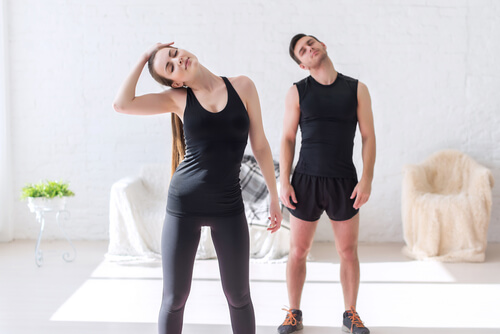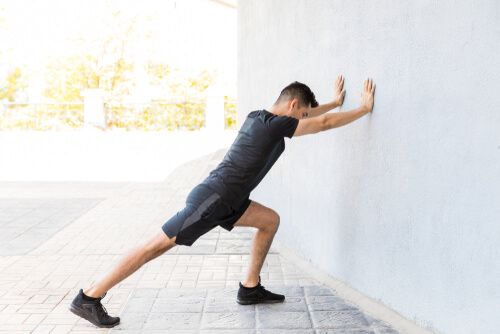



Spending an extra ten minutes to stretch your muscles after training is probably not the first thing on your mind. Most people would prefer to do cardio, spend extra time lifting weights, or call it a day. But, regardless of how you see it, stretching is beneficial, and as little as a few minutes of it can bring numerous short and long-term benefits.
For one, stretching improves our muscles’ ability to lengthen (flexibility). As a result, stretching can help us avoid injury, such as pulling a muscle (1). The effect is significant because flexibility is also a component of mobility––the ability to move freely. Good mobility makes it easier to perform various activities, get in the correct starting position, and maintain balance during training.
Second, stretching promotes blood flow to our muscles, which could lead to quicker recovery (2). Third, stretching is the perfect cooldown activity to perform after strenuous training. It brings relaxation and allows you to practice mindfulness, which can be rewarding.
The bench T-spine extension is a fantastic exercise that stretches your thoracic spine (mid and upper back), leading to improved posture, better lung capacity, and reduced risk of lower back pain.
Stand perpendicular to a flat gym bench, get down on your knees, lean forward, and place your elbows on the edge of the back support. Walk your knees back, making your torso horizontal (parallel to the floor). Take a breath and dip your head between your arms as you sit your buttocks back toward your calves. Doing so will stretch your upper and middle back. Hold the position for 30 to 60 seconds and release.
The standing bicep and chest stretch is beneficial for promoting recovery in these muscles and preventing rolled shoulders that often occur from excessive tightness in the anterior musculature.
Stand with your right side facing the end of a wall, a squat rack, or a doorway. Raise your right arm laterally, place it against the wall and extend your elbow. Your thumb should face the floor, allowing you to stretch the bicep. Push your right shoulder forward as you twist your hips in the same direction. Doing so will lengthen your right pectoral and bicep. Hold the position for 30 to 60 seconds and release. Turn to your other side and stretch your left pectoral and bicep in the same way.

The overhead tricep stretch is a simple activity that lengthens the muscles covering the rear of your upper arms and promotes recovery. Stretching the triceps is also beneficial for shoulder range of motion.
Stand tall and raise your right arm to the side of your head. Bend the right elbow to bring your forearm behind your head. Place your left hand on your right elbow and gently pull the arm behind your back. Pull until you feel a moderate stretch in your tricep and hold the position for up to a minute. Release your right elbow, raise your opposite arm, and perform the same stretch.
The trapezius is a large muscle that covers the central region of your mid and upper back. Stretching the area is vital for good posture and pain prevention.
Stand tall or sit comfortably with your arms to your sides, chest out, and feet in a normal stance. Raise your right arm to the side of your head. Place your hand over your head and close to your left ear. Relax your neck and pull your head to the right, feeling the left side of your neck and upper back stretching. Hold the position for up to a minute and release. Raise your opposite arm and stretch the right side of your neck and upper back.

Good wrist mobility is vital for safe training and performing exercises like the front squat.
Stand in front of a wall and extend your right arm, placing it flat against the wall with your fingers pointing down. Extend your elbow and lean on your wrist gently, stretching the area. Get your palm as close to the wall as possible. Hold to the point where you feel a stretch and release after 30 to 60 seconds. Raise your opposite arm to the wall, stretching the other wrist in the same way.
Static stretching is one of the more straightforward and most relaxing activities for improving our flexibility, promoting recovery, and reducing the risk of injuries. Stretching is also a fantastic way to become more mindful, cool down after a strenuous session, and improve our training performance.
The best part is that we don’t have to do much. As little as five to ten minutes of dedicated stretching after training is more than enough for us to reap the benefits.